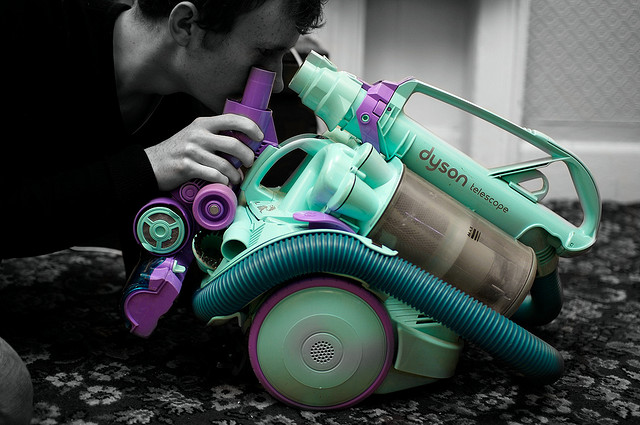 Any one of a number of giant companies could have been first to market with a bagless vacuum cleaner. They all knew that their cleaners lost suction when dust bags became full. They also knew how their customers wrestled to empty dust bags while being enveloped by the dirt they’d just sucked up out of their carpets. Taxi companies were aware that people found waiting for cabs frustrating and watching the meter running while they were stuck in a traffic jam unnerving. Big hotel chains understood that their guests wanted a more personal service and resented the inflated prices charged for items from the minibar.
Any one of a number of giant companies could have been first to market with a bagless vacuum cleaner. They all knew that their cleaners lost suction when dust bags became full. They also knew how their customers wrestled to empty dust bags while being enveloped by the dirt they’d just sucked up out of their carpets. Taxi companies were aware that people found waiting for cabs frustrating and watching the meter running while they were stuck in a traffic jam unnerving. Big hotel chains understood that their guests wanted a more personal service and resented the inflated prices charged for items from the minibar.
And yet, it took smaller players like Dyson, Uber and Airbnb to respond to those needs and bring about change. So how and why were they able to succeed in disrupting a market?
CHARACTERISTICS OF DISRUPTIVE INNOVATIONS
1. Start with a purpose and a small problem rather than a big idea.
2. Based on what people do, not what they say they do.
3. Leverage data to get closer to users, customers or fans.
4. Can be more responsive to customer’s behaviours and needs.
5. Tap into consumer’s latent desire.
6. Connect the disconnected.
7. Create value where none existed.
8. Disrupt people not industries—changing the user’s worldview and behaviour.
9. Begin by changing a small group of people at the edges.
10.Seem obvious only after the fact.
Disruptive innovators thrive on creating difference first and focus on growth later. They almost never begin by designing a product—they always start with their customer’s story.
Image by Peter Harding.
 Any one of a number of giant companies could have been first to market with a bagless vacuum cleaner. They all knew that their cleaners lost suction when dust bags became full. They also knew how their customers wrestled to empty dust bags while being enveloped by the dirt they’d just sucked up out of their carpets. Taxi companies were aware that people found waiting for cabs frustrating and watching the meter running while they were stuck in a traffic jam unnerving. Big hotel chains understood that their guests wanted a more personal service and resented the inflated prices charged for items from the minibar.
Any one of a number of giant companies could have been first to market with a bagless vacuum cleaner. They all knew that their cleaners lost suction when dust bags became full. They also knew how their customers wrestled to empty dust bags while being enveloped by the dirt they’d just sucked up out of their carpets. Taxi companies were aware that people found waiting for cabs frustrating and watching the meter running while they were stuck in a traffic jam unnerving. Big hotel chains understood that their guests wanted a more personal service and resented the inflated prices charged for items from the minibar.